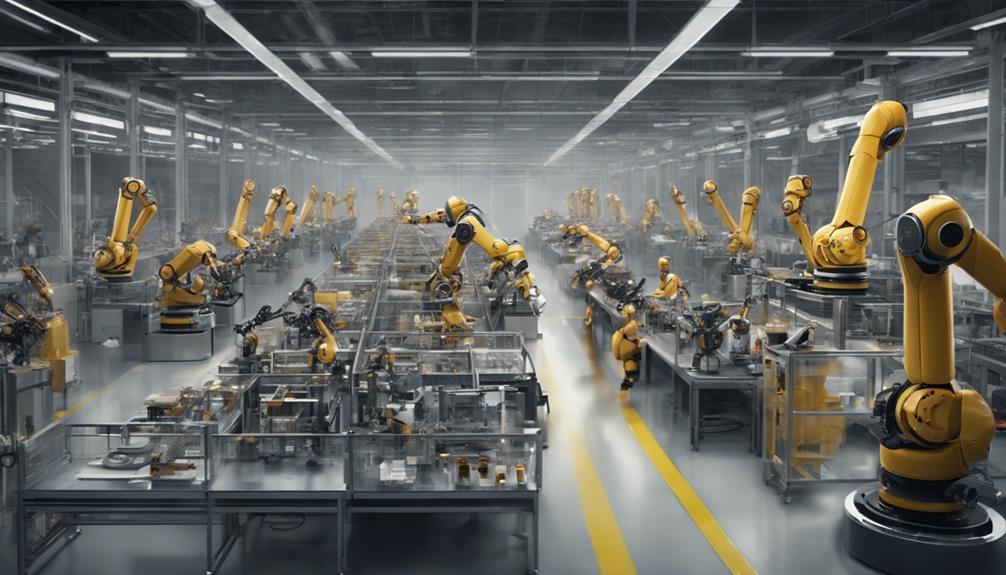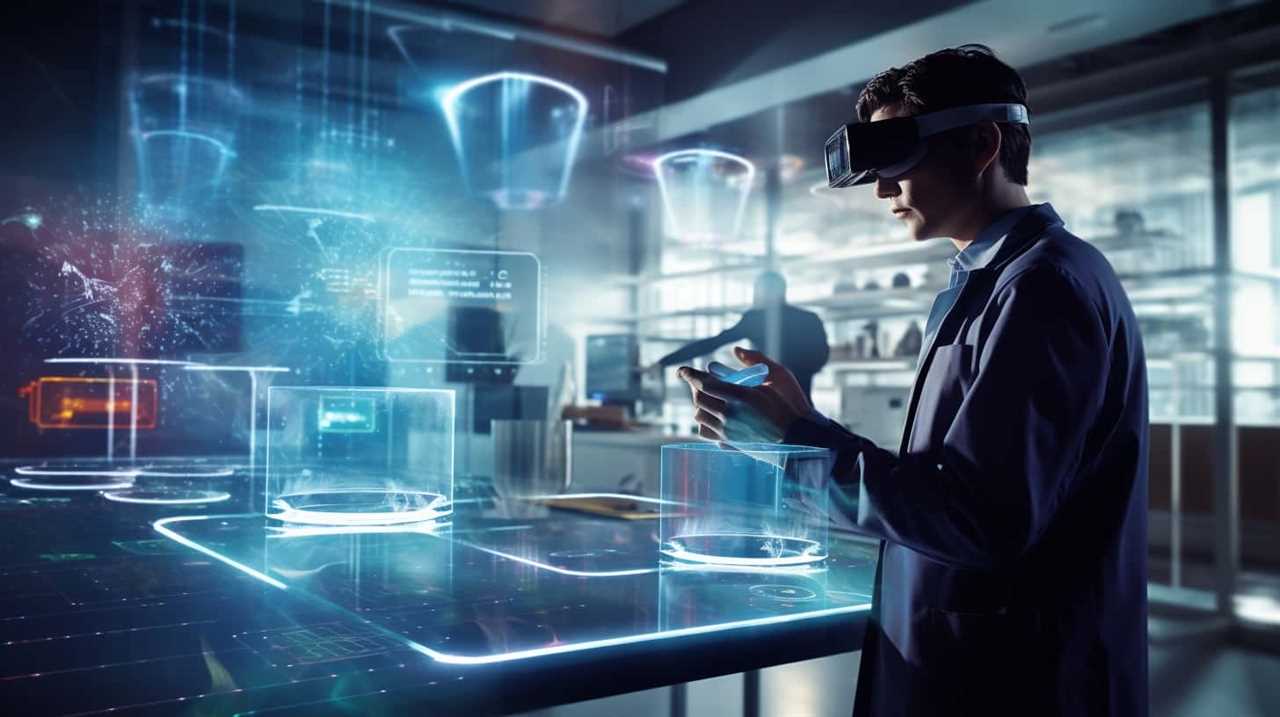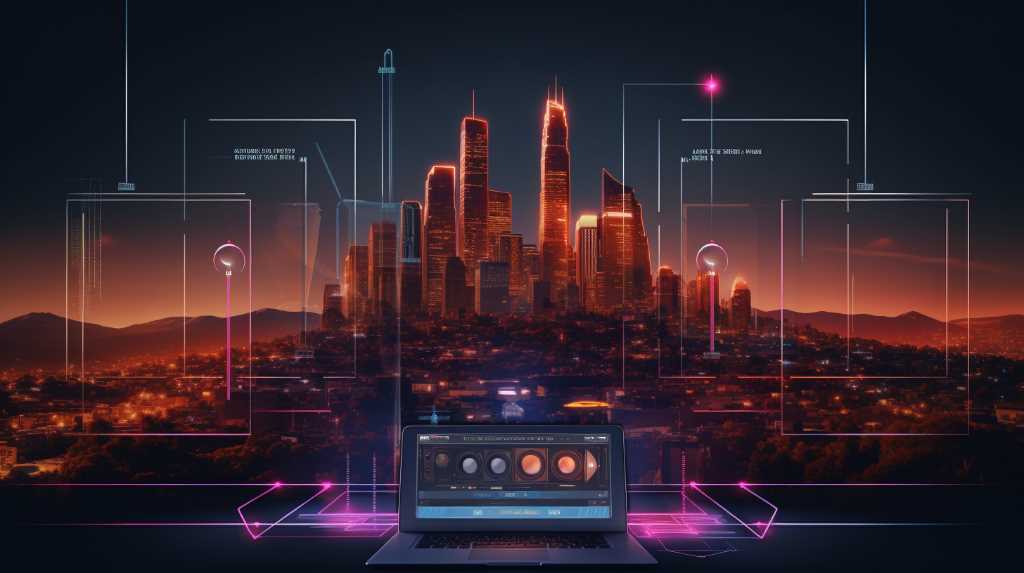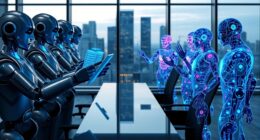As automation and artificial intelligence (AI) become increasingly common in various industries, the growing worry about robots replacing human jobs becomes more pronounced. This guide provides a comprehensive analysis of the jobs that are most at risk from this transformation and suggests strategies for individuals and businesses to effectively adjust to these advancements.
With the projection of millions of jobs being potentially replaced by robots in the near future, understanding the implications and opportunities that come with this shift is essential. Join the conversation to explore the intricate balance between technological advancements and the preservation of human-centric skills in the ever-evolving job market.
Key Takeaways
- Automation in various industries poses a risk of replacing human workers.
- Upskilling and retraining programs are vital for adapting to robotics in the workplace.
- Perception studies indicate exaggerated fears of job displacement by robots.
- AI development creates new opportunities while emphasizing the importance of human skills in the workforce.
Industries Most Vulnerable to Automation
The rapid advancement of automation technologies poses a significant threat to various industries. The healthcare sector, agriculture, manufacturing, service industries, and transportation and logistics are particularly vulnerable to job displacement.
In healthcare, AI is poised to replace jobs such as medical transcriptionists and radiologists, impacting white-collar positions that were traditionally reliant on human expertise.
The agriculture sector faces automation challenges, with robots and AI gradually taking over tasks like planting, harvesting, and monitoring crop health. This shift could potentially lead to job loss for human workers involved in these manual activities.
Similarly, industrial sectors like manufacturing and assembly lines are at risk of automation systems replacing human workers in roles that require repetitive tasks and precision.
Service industries such as hospitality and retail may witness automated systems replacing jobs like customer service representatives and cashiers, streamlining operations but causing job displacement for human workers.
Strategies for Adapting to Robotics

Implementing strategic workforce development initiatives is essential for organizations to effectively adapt to the increasing presence of robotics in the workplace. To navigate the changing job market as robots replace human roles, companies can consider the following strategies:
- Upskilling Workers: Companies can invest in training programs to enhance employees' skills in areas that complement automation, ensuring they remain valuable assets in the evolving workforce.
- Flexible Work Arrangements: Implementing flexible work arrangements can help organizations smoothly integrate robots into the workforce, allowing for efficient collaboration between human workers and automated systems.
- Retraining Programs: Offering retraining programs for employees affected by automation can mitigate job displacement, equipping them with the skills needed for new roles within the organization.
- Hybrid Roles: Creating hybrid roles that combine human skills with robotic assistance can enhance productivity and efficiency, maximizing the benefits of automation while retaining human expertise.
- Clear Communication Channels: Developing clear communication channels about the role of robots in the workplace is crucial for employee acceptance and understanding, fostering a positive and collaborative work environment.
Implications of Robotic Integration
With the rise of robotic integration in various industries, a paradigm shift in the dynamics of the modern workforce is becoming increasingly evident. The integration of robots and humans has the potential to enhance productivity and create new opportunities. According to the Future of Jobs Report, machine learning and AI will indeed replace certain tasks currently performed by human beings. However, this shift is not solely about replacing humans; it also emphasizes the importance of critical thinking and problem-solving skills which are uniquely human. The table below illustrates the implications of robotic integration on the workforce:
| Implication | Description |
|---|---|
| Replace Humans | Certain tasks will be automated by robots, potentially displacing human workers. |
| Create New Jobs | The integration of robots may lead to the creation of new job roles and opportunities. |
| Emphasis on Critical Thinking | Human workers will need to focus on tasks that require creativity and critical thinking. |
| Problem Solving Skills | Jobs that involve complex problem-solving will become more valuable in the workforce. |
| Human-Centric Approach | Maintaining a balance between human and robotic roles to maximize efficiency in the workplace. |
This data-driven analysis highlights the need for a strategic approach to navigate the changing landscape of work due to robotic integration.
Job Displacement Risk Assessment

Assessing the risk of job displacement due to robotic integration requires a nuanced understanding of workers' perceptions and actual impact. Despite the increasing integration of robots in the workforce, studies reveal interesting insights into how workers perceive the threat of job replacement. Here are some key points to consider:
- Only 14% of workers report job replacement by robots, indicating a lower actual impact.
- Workers who experienced job displacement overstate robot takeover by about three times, suggesting a perception gap.
- Perception studies show that workers estimate 47% of all jobs have been taken over by robots if they were replaced.
- Even workers who haven't experienced job replacement estimate that 29% of jobs have been supplanted, showing a general fear of job displacement.
- Findings suggest that the fear of robots taking over jobs is greatly exaggerated based on workers' perceptions.
These findings highlight the discrepancy between actual job displacement rates and workers' fears, pointing to a need for more informed discussions on the role of robots in the future of work.
Navigating the Future of Work
The evolving landscape of work is increasingly shaped by the integration of robots and artificial intelligence, impacting a wide array of industries and job roles globally. While robots are projected to replace 85 million jobs by 2025, AI is transforming various job roles, including customer service representatives, car and truck drivers, computer programmers, research analysts, and paralegals. However, jobs requiring complex tasks and human interaction, such as teachers, nurses, therapists, and tradespeople, are less likely to be replaced by AI. Instead, AI development is creating new opportunities in fields like machine learning engineering and AI ethics. Human workers will continue to play a crucial role in training, maintaining, and monitoring AI systems, redirecting efforts towards more productive tasks. The future of work will see a shift towards leveraging AI for more efficient and innovative job functions, with a forecast to create 97 million new types of work while certain manual labor roles are being replaced by robots.
| Job Roles Replaced by Robots | Job Roles Leveraging AI |
|---|---|
| Customer Service Representatives | Machine Learning Engineers |
| Car and Truck Drivers | AI Ethics Specialists |
| Manual Labor Roles | Computer Programmers |
| Paralegals | Research Analysts |
Frequently Asked Questions
Can Robot Replace Human Jobs?
Robots are increasingly adept at replacing human jobs across various industries, such as customer service, driving, and coding. With advancements in automation and AI, roles traditionally performed by humans are at risk of being automated.
What Are 10 Things Robots Can Do?
Robots can perform repetitive tasks with precision, excel in hazardous environments, operate non-stop for heightened productivity, conduct complex calculations swiftly, contribute to healthcare through surgeries and patient care, assist in rehabilitation, automate manufacturing processes, and streamline data analysis.
Why Are Robots Being Used Instead of Humans?
Robots are replacing humans in tasks due to increased efficiency, reduced errors, enhanced safety in hazardous environments, ability to operate in extreme conditions, precision, consistency, cost-effectiveness, and round-the-clock availability. These factors drive the adoption of robotic automation.
How Have Robots Changed the Way Humans Work?
Robots have revolutionized work processes by augmenting human capabilities, increasing efficiency, and enabling a shift towards higher-value tasks. They optimize operations, enhance precision, and allow for a more strategic allocation of resources in various industries.
Conclusion
In conclusion, the integration of robots in various industries poses a significant challenge to the workforce, with the potential to replace 85 million jobs globally by 2025. This statistic underscores the urgent need for individuals to adapt and acquire the necessary skills to thrive in an increasingly automated world.
As technology continues to advance, it is crucial for organizations and workers alike to navigate the implications of robotic integration strategically and proactively.
Ava combines her extensive experience in the press industry with a profound understanding of artificial intelligence to deliver news stories that are not only timely but also deeply informed by the technological undercurrents shaping our world. Her keen eye for the societal impacts of AI innovations enables Press Report to provide nuanced coverage of technology-related developments, highlighting their broader implications for readers.










